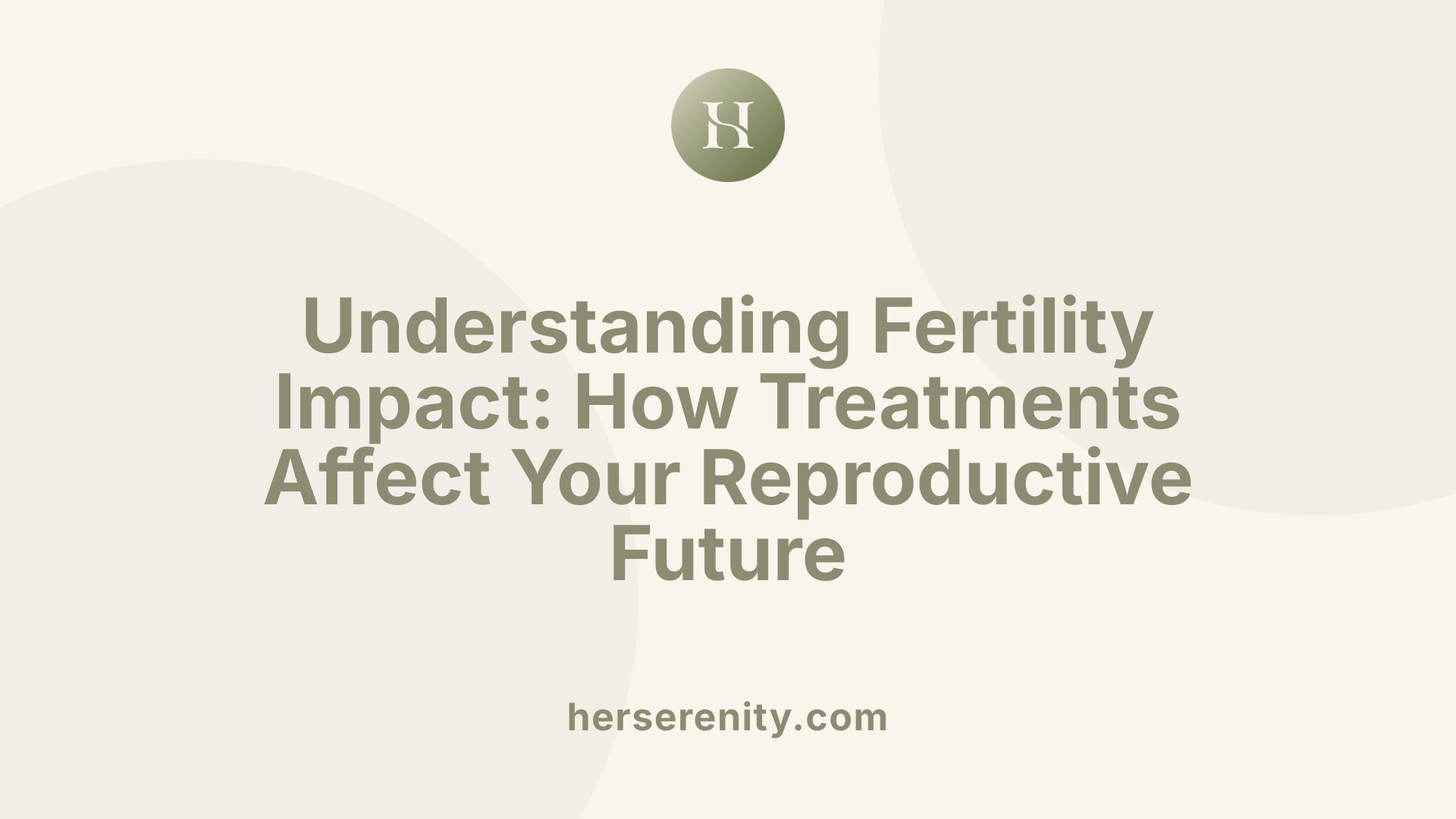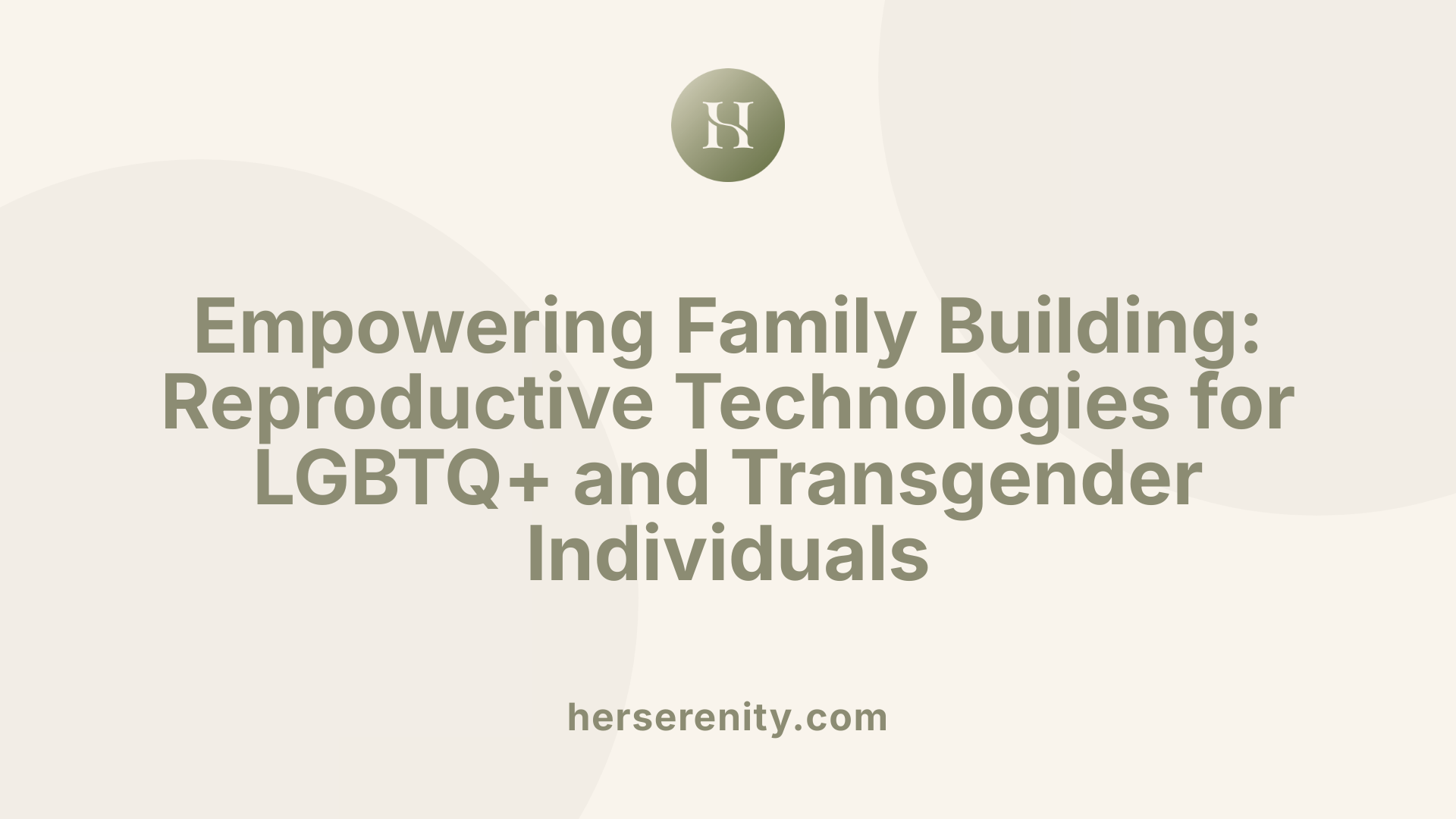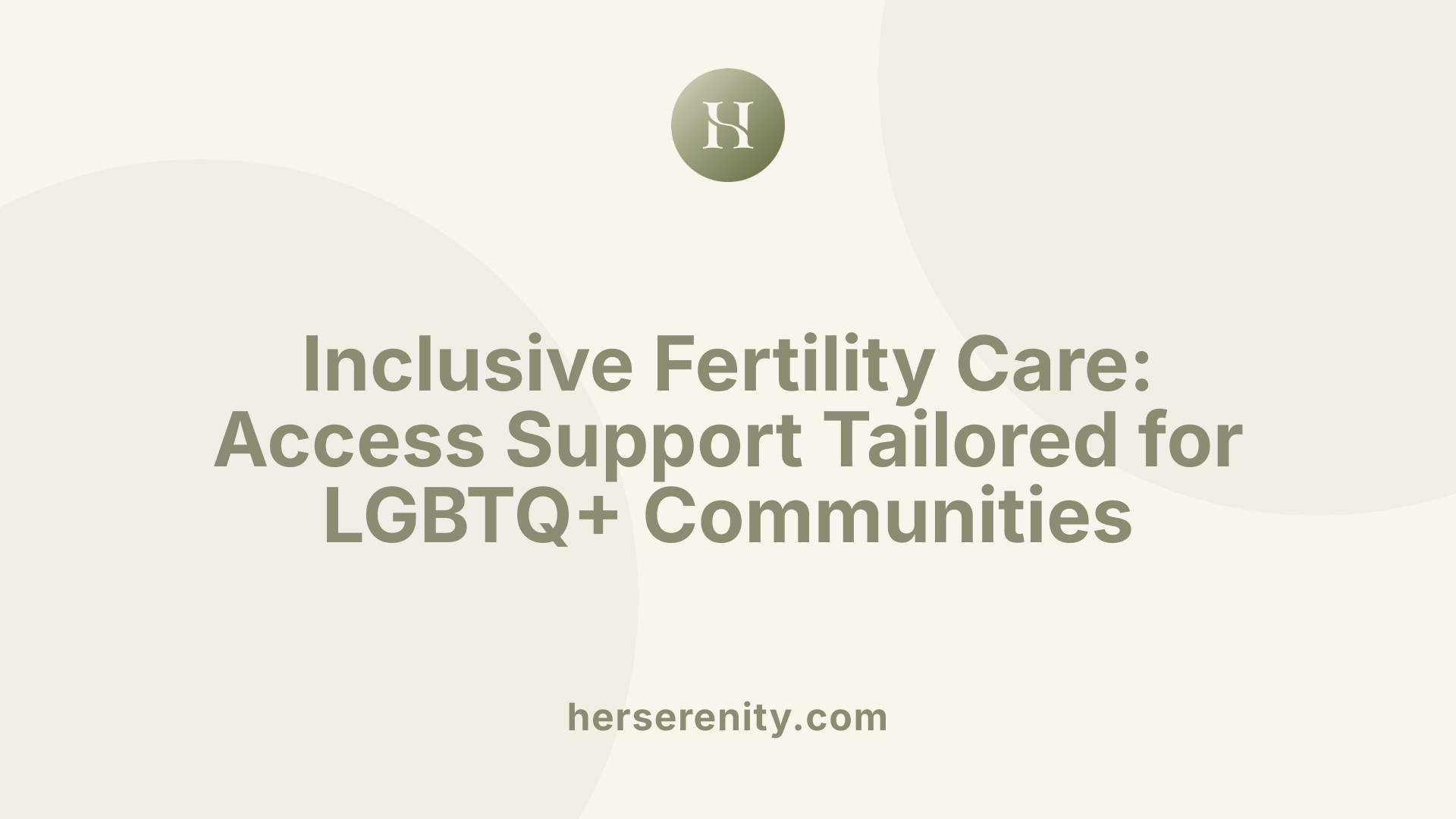Fertility options for transgender individuals and couples
Inclusive Paths to Parenthood: Exploring Fertility Options for Transgender and LGBTQ+ Individuals

Understanding Fertility Perspectives in the LGBTQ+ Community
Fertility and family-building journeys for transgender and LGBTQ+ individuals encompass a wide array of options, tailored to meet diverse desires and medical circumstances. Recognizing that reproductive goals remain fundamental within these communities, advancements in reproductive technology and supportive care have created inclusive pathways toward parenthood. This article explores the medical, legal, and support frameworks that empower transgender individuals and couples to realize their family-building aspirations, emphasizing pre-emptive planning, technological options, and legal considerations.
Fertility Preservation: Safeguarding Future Reproductive Options

What fertility preservation options are available for transgender individuals before or during gender-affirming treatments?
Transgender individuals have several methods to preserve their fertility before starting or during gender-affirming treatments. For trans women, sperm banking is the most common option. This involves collecting and freezing sperm, ideally before beginning hormone replacement therapy (HRT), as estrogen and other hormones can impair sperm production. If preserved, this sperm can later be used for assisted reproductive procedures such as IVF or intrauterine insemination.
For trans men, egg freezing (oocyte cryopreservation) is a key option. This process involves hormone stimulation to develop multiple eggs, which are then retrieved surgically and frozen for future use. Starting this process before testosterone therapy ensures the best quality eggs. However, if hormones have been used for some time, retrieval might be less effective or more complicated.
In addition to sperm and egg preservation, ovarian tissue cryopreservation is an experimental but promising technique, especially for trans men who may not be able to undergo hormone stimulation or egg retrieval. This method involves surgically removing and freezing ovarian tissue, which could later be transplanted back to restore natural fertility.
Timing is crucial: pursuing fertility preservation before hormone therapy or surgical interventions helps maximize success rates. Medical providers often recommend discussing these options well in advance of treatment plans to ensure preservation occurs promptly.
If fertility preservation is not possible, there are still reproductive options available, such as using donor eggs or sperm, surrogacy, and IVF, which can accommodate a variety of family-building goals.
In summary, a range of fertility preservation methods tailored to individual needs and timing considerations allows transgender persons to retain reproductive potential, affirming that everyone has the right to future parenthood.
Impacts of Hormone Therapy and Surgical Interventions on Fertility
 Hormone therapies such as testosterone and estrogen significantly influence fertility and reproductive capacity in transgender individuals. Testosterone therapy in trans men can lead to ovulation suppression and ovarian atrophy, effectively reducing the potential for pregnancy. Conversely, estrogen therapy in trans women can diminish sperm production over time due to testicular damage caused by prolonged exposure.
Hormone therapies such as testosterone and estrogen significantly influence fertility and reproductive capacity in transgender individuals. Testosterone therapy in trans men can lead to ovulation suppression and ovarian atrophy, effectively reducing the potential for pregnancy. Conversely, estrogen therapy in trans women can diminish sperm production over time due to testicular damage caused by prolonged exposure.
The effects of these treatments on fertility are not always permanent. In many cases, fertility can be restored after stopping hormone therapy, generally within 3 to 6 months. For trans men, discontinuing testosterone may lead to the return of menstrual cycles and ovulation, making natural conception possible again. Trans women often need to cease estrogen and anti-androgens before attempting conception to allow for sperm production to resume. However, the degree of reversibility depends on factors such as duration of hormone use and individual health conditions.
Certain surgical procedures like gonadectomy or hysterectomy are irreversible and eliminate natural fertility. In contrast, other interventions like hormone therapy might impact fertility temporarily or permanently depending on their nature and duration. Fertility preservation options, including sperm, eggs, or ovarian tissue cryopreservation, should ideally be discussed before initiating hormone or surgical treatments. This proactive planning is essential, as long-term hormone use can affect gamete quality and reproductive anatomy.
Overall, understanding the impact of treatments on fertility, and the potential for its restoration, underscores the importance of early counseling and tailored reproductive planning. These measures ensure that transgender individuals can make informed decisions aligned with their future family-building goals.
Assisted Reproductive Technologies (ART) for Transgender and LGBTQ+ Individuals
 Assisted reproductive technologies (ART) offer vital options for transgender individuals and LGBTQ+ couples wishing to build families. These methods include in vitro fertilization (IVF), intrauterine insemination (IUI), surrogacy, and various forms of gamete donation, which provide flexibility depending on an individual’s medical status and personal goals.
Assisted reproductive technologies (ART) offer vital options for transgender individuals and LGBTQ+ couples wishing to build families. These methods include in vitro fertilization (IVF), intrauterine insemination (IUI), surrogacy, and various forms of gamete donation, which provide flexibility depending on an individual’s medical status and personal goals.
For transgender men with a functioning uterus and ovaries, ART options include egg freezing before hormone therapy, and if desired, achieving pregnancy through IUI or IVF. Transgender women, on the other hand, often utilize sperm cryopreservation prior to hormone therapy or gender-affirming surgeries. Their available treatments revolve around using preserved sperm for IUI or IVF, possibly with a gestational carrier if pregnancy is not carried by themselves.
Same-sex female couples commonly use donor sperm combined with IUI or IVF, and reciprocal IVF allows each partner to contribute to pregnancy—one provides the eggs, and the other carries it. This method supports both partners’ biological connection to the child.
Surrogacy is frequently employed by gay males and transgender women who cannot or prefer not to carry a pregnancy themselves. Embryos created via IVF using donor eggs or sperm are transferred to the surrogate’s uterus to gestate.
Looking toward future innovations, in vitro gametogenesis (IVG) is emerging as a promising technology. It involves creating reproductive cells from a person’s own somatic cells in the laboratory, bypassing the need for donor gametes. This could allow same-sex and transgender individuals to have genetically related children without reliance on donor sperm or eggs. Although still in experimental stages, IVG holds considerable promise for expanding reproductive options.
| ART Method | Suitable For | Main Use | Future Potential | Notes |
|---|---|---|---|---|
| IVF | Transgender men and women, same-sex couples | Fertilize eggs or sperm outside the body | In vitro gametogenesis, creating gametes from somatic cells | Widely used, including with donor gametes |
| IUI | Transgender men, same-sex couples | Direct insertion of sperm into uterus | Possible synergy with future gamete development techniques | Less invasive, suitable for less complex fertility issues |
| Surrogacy | Transgender women, gay men | Use of embryo transfer to carry pregnancy | Potential for embryo creation from in vitro gametes | Requires legal and ethical considerations |
| Gamete Donation | All individuals | Use donor eggs or sperm to achieve pregnancy | Genetic linkage to donors, development of IVG | Provides more options when personal gametes are unavailable |
Fertility treatment choices should be tailored to each individual’s health, medical history, and personal desires, with counseling and support throughout the process. As reproductive science advances, options for transgender and LGBTQ+ individuals are expected to expand, fostering a future where family-building is accessible and inclusive.
Legal and Supportive Frameworks for Family Building
What legal considerations are involved in family-building for transgender and LGBTQ+ individuals?
Family-building for transgender and LGBTQ+ people involves navigating a complex and changing legal landscape. The laws and regulations differ significantly depending on where the individuals live, and understanding these legal aspects is essential for securing parental rights and ensuring a smooth path to parenthood.
One of the primary concerns is establishing legal parentage. This often requires additional steps like adoption, including second-parent or confirmatory adoption, or obtaining court orders that recognize parental rights, especially when assisted reproductive technologies or surrogacy are involved.
For transgender parents, updating legal documents such as names and gender markers is crucial. These changes help ensure legal recognition in various official contexts, protecting parental rights and reducing complications.
Laws related to surrogacy and assisted reproduction vary widely across states and countries. Some regions have supportive legislation, while others impose restrictions or outright bans. Legal guidance is often necessary to draft enforceable agreements and protect all parties' rights.
Additionally, protections around custody, support, and estate planning are vital. These legal frameworks help safeguard the family’s stability and ensure that children have the necessary legal protections regardless of changes in circumstances.
Recent legal advancements have increasingly recognized the legitimacy of diverse family structures, offering better protections and rights for LGBTQ+ families. However, thorough legal planning and professional support remain crucial to navigate this evolving terrain.
In summary, understanding the legal considerations in family building helps LGBTQ+ individuals and transgender parents secure their family’s future and uphold their parental rights across different jurisdictions.
Accessing Tailored Fertility Support and Care Services
 LGBTQ+ individuals seeking fertility care can benefit from specialized clinics and healthcare professionals committed to providing inclusive, gender-affirming services. These clinics offer a variety of reproductive options such as in vitro fertilization (IVF), donor insemination, surrogacy, and preemptive fertility preservation like egg and sperm freezing. They focus on creating a respectful environment through gender-neutral language, inclusive intake processes, and psychosocial support tailored to the specific needs of LGBTQ+ patients.
LGBTQ+ individuals seeking fertility care can benefit from specialized clinics and healthcare professionals committed to providing inclusive, gender-affirming services. These clinics offer a variety of reproductive options such as in vitro fertilization (IVF), donor insemination, surrogacy, and preemptive fertility preservation like egg and sperm freezing. They focus on creating a respectful environment through gender-neutral language, inclusive intake processes, and psychosocial support tailored to the specific needs of LGBTQ+ patients.
Overcoming societal barriers and stigma remains a challenge, but many forward-thinking healthcare providers and organizations actively work to address these issues. They incorporate targeted training for staff, advocate for policy changes, and promote practices that reduce discrimination, ensuring equitable access to reproductive services.
Support resources extend beyond clinical care, including counseling services to help address emotional and psychological concerns. Telehealth platforms provide additional convenience and privacy, making it easier for LGBTQ+ individuals across diverse locations to access expert guidance and follow-up care.
Legal and advocacy organizations also play a vital role by offering guidance on reproductive rights, legal considerations related to surrogacy, and parental rights. These resources empower LGBTQ+ individuals and couples to navigate complex legal landscapes confidently.
While challenges such as high costs and limited data on long-term outcomes persist, continuous efforts are underway to improve access. The integration of inclusive policies, community support, and technological innovations drives progress toward equitable reproductive healthcare for the LGBTQ+ community.
For more detailed information and assistance, searching terms like "Fertility care and support services for LGBTQ+ individuals," "inclusive clinics," "legal guidance for LGBTQ+ family building," and "psychosocial support for LGBTQ+ fertility journey" can connect individuals with the resources suited to their specific needs, ensuring a supportive path to parenthood.
Empowering Family Building with Knowledge and Support
Navigating fertility options as a transgender or LGBTQ+ individual involves understanding both medical procedures and legal frameworks to craft a pathway that aligns with personal goals and identity. Advances in reproductive technology, coupled with inclusive and affirming care, have expanded access to parenthood. It remains essential to consult specialists early, consider fertility preservation options before hormone or surgical interventions, and seek legal guidance to secure parental rights. With ongoing societal progress, supportive healthcare environments, and legal protections, building a family is increasingly accessible for all, reflecting a commitment to inclusive, affirming familyhood.
References
- Trans Women & Trans Men Pregnancy Options: IVF, IUI & More
- Fertility options for transgender persons | Gender Affirming Health ...
- Reproductive Options for Transgender Individuals - Yale Medicine
- Fertility Treatment Options for Transgender Couples | IRMS
- LGBTQIA+ family building options - Shady Grove Fertility
- Building Families: Fertility Options for 2SLGBTQQIA+Individuals and ...
- LGBTQ+ Family Building - Fertility - Penn Medicine
- Fertility Treatments for Transgender Couples
- Fertility Options for LGBTQ+ Families - Duke Health



































































































